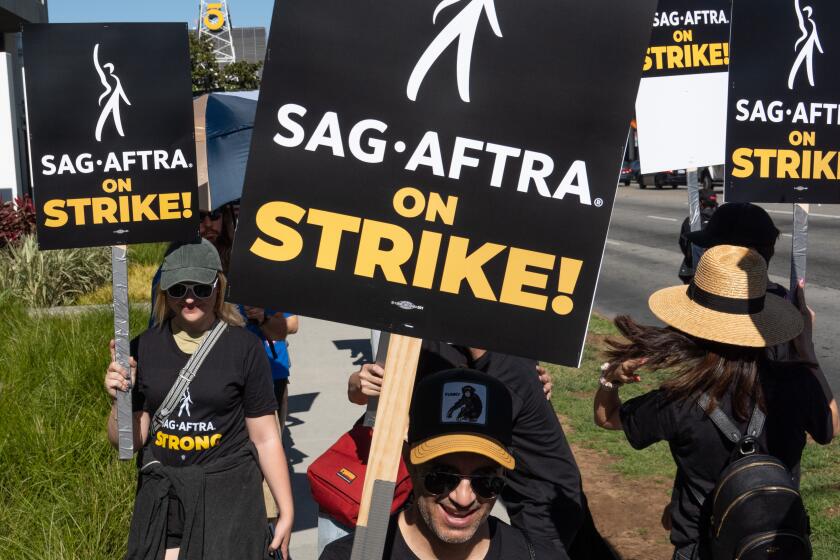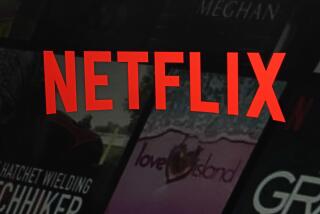Brace yourself. Streaming platforms are going to remove a lot more shows

- Share via
“#embarrassing.” That is how the star of the Disney+ series “Willow,” Warwick Davis, described the streaming video platform’s decision to remove the show entirely.
“Willow” is not alone. Ever since Warner Bros. Discovery decided to not release the movie “Batgirl” on its streaming platform, then known as HBO Max, lots of filmed titles have been removed from streaming services. Many people blame these decisions on the tax write-offs that can be taken when a show is pulled off a platform.
A profitable new normal has yet to reveal itself in the face of big tech changes, including AI. But to produce content, you will always need creators.
In class with my students last week, we estimated the additional tax benefit Warner Bros. Discovery got by discarding “Batgirl”: about $700,000. The studio is said to have spent $90 million to make the movie. The tax savings alone do not justify the decision to scrap it, so there must be other financial incentives at work.
There are two costs that streaming services bear when they leave under-watched programming online. The first cost is the continuing compensation payments to the cast and crew, known as residuals. Under the collective bargaining agreements reached between the studios and the guilds in 2020, the amount of residuals paid by the studio on each show was a function of how many subscribers were on the streaming service.
In other words, Disney had to pay the residuals cost of “Willow” based on how many subscribers the platform had, regardless of how many people were watching the show. Higher residual rates in the new deal that the Writers Guild of America just negotiated will probably accelerate streamers’ decisions to drop shows. The guild told its members that Netflix’s residual payouts for certain shows “will increase from the current $18,684 for a one-hour episode to $32,830.” The writers may have unintentionally increased Netflix’s motivation to drop their under-watched shows.
The writers strike won pay increases, TV staffing minimums and AI protections. But their deal falls short on streaming residuals, and the SAG-AFTRA strike shouldn’t do the same.
The second cost of leaving under-watched programming online is damage to the brand. When viewers watch a show that disappoints them, they may check out something on another streaming service. With enough disappointments, consumers can easily cancel their subscription and switch their attention to another. In a worst-case scenario, fans might spend less at the theater when the next DC movie comes out because “Batgirl” was so unsatisfactory.
Yet the good news is that “Willow” and other withdrawn shows are not necessarily gone from streaming forever. They may eventually follow the same path back to home viewers as “Westworld,” a formerly trending series that began its life on HBO. “Westworld,” which left Max presumably because of tax write-off advantages and residuals costs, has arisen from the dead on another streaming service, Tubi.
Tubi, Pluto TV and the Roku Channel — free, ad-supported streaming television, or FAST — offer a solution to keeping under-watched, under-loved programming accessible.
The difference between FAST services and subscription platforms is how they make their money. The free platforms earn income only if viewers watch ads. When “Baywatch” takes a commercial break on Pluto TV, about half of the money paid by the advertiser goes to Pluto TV, and the other half goes to the show’s owner. The more people watch “Baywatch,” the more the show’s owner earns.
The deal Writers Guild of America struck with studios is a hopeful sign that L.A.’s entertainment industry can get back to work soon.
Moving a show to a FAST service means the amount of residuals for the cast and crew gets calculated in a different way. With FAST, residuals are determined by actual viewership, not potential viewership. The result is a win for studios that keeps the show online.
Since the early days of Netflix’s streaming service, consumers have been were lured by the promise of an infinite number of film and television series being available at all times. That nirvana of low prices, no ads and 600 new scripted series made per year was unsustainable. Streaming peaked in 2021, and the number of shows will likely continue to decline, a bad prospect for creators and consumers, but not for the bottom lines of streaming platforms.
In the bigger picture, this is a classic story of how industries grow and mature. They start with a new technology, lots of competition and loads of capital. Entrepreneurs use low prices to induce consumers into the market. (Remember how cheap Ubers were 10 years ago?)
At some point, the herd thins, prices rise, and profitability becomes the focus. This shift naturally hurts employees, suppliers and consumers.
The other part of the classic story provides some consolation though. As any once-exciting format fades, some new technology is usually taking shape, maybe in development by a startup somewhere. That next big thing will catch investors’ interest and attract early adopters just as streaming did. If you keep your eyes open, you might be lucky enough to ride that wave too.
David Offenberg, an associate professor of entertainment finance at Loyola Marymount University, is the author of “Independent Film Finance: A Research-Based Guide to Funding Your Movie.”
More to Read
A cure for the common opinion
Get thought-provoking perspectives with our weekly newsletter.
You may occasionally receive promotional content from the Los Angeles Times.












